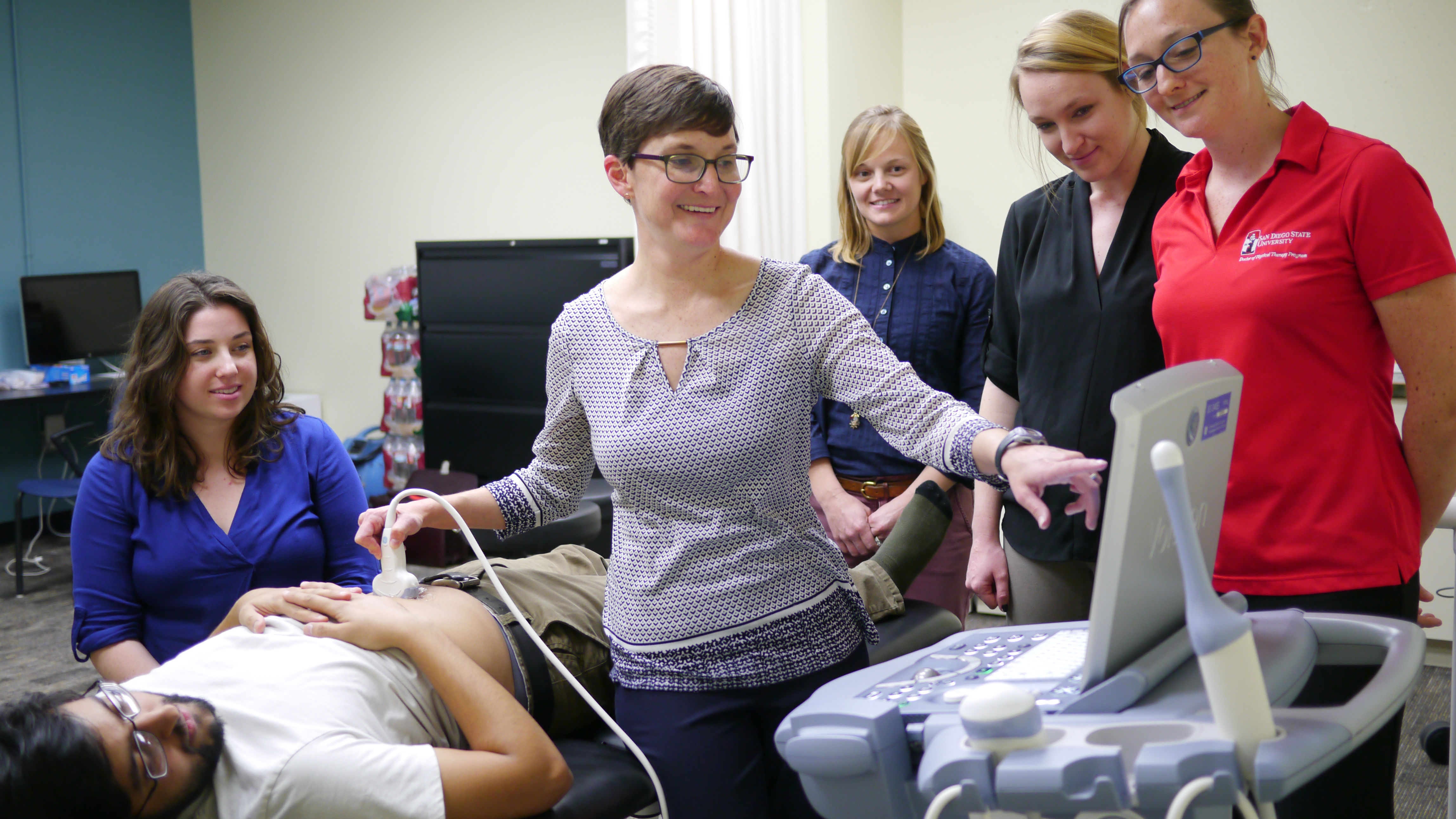
Pelvic Health and Rehabilitation Laboratory – PG 1048

My research program encompasses aging, metabolism and women’s health. I have experience working both with human and animal models and have used clinical non-invasive and basic science measures to answer clinically relevant questions. I have previously published my work on the effects of exercise in the area of diabetes and peripheral neuropathy, but my current research interest is in the area of female pelvic floor dysfunction. I am currently investigating the role of skeletal muscle architecture and surrounding structures on pelvic floor function and the role of rehabilitation on these structures.

Facility
The lab is equipped with state-of-the-art ultrasound imaging equipment, biofeedback, and devices for measuring pelvic muscle strength and function.
Projects
- Strength Training for the Anal Sphincter Muscles: Biofeedback is the gold standard for non-invasive treatment for patients with fecal incontinence. While most biofeedback training includes a strengthening component, the traditional exercises are not performed with any resistance. The goal of this project is to determine if strength training for the anal sphincter muscles will improve outcomes in women with fecal incontinence. This project has been funded by the National Institutes of Health ($2 million direct costs, 2017-2022).
- The Impact of Hip Strengthening on Pelvic Floor Function in Young Healthy Women: There is evidence that the pelvic floor muscles do not function in isolation and that other muscles (such as muscles around the hip) may impact pelvic floor function. We investigated the effect of hip exercises on pelvic floor function. Measurements include: muscle force utilizing dynamometers and vaginal squeeze pressure using the Peritron perineometer.
- The Impact of Hip Strengthening on Pelvic Floor Function in Postmenopausal Women: Based on data collected in young women, we are now implementing the same hip exercise program in postmenopausal women to determine if aging, menopause and parity change the way the pelvic floor muscles respond to a hip exercise program. We will also investigate the impact of these exercises on any pelvic floor disorders.
- Postpartum Diastasis Recti Abdominis: Treatment and Functional Implications: Diastasis Recti Abdominis (a separation of the abdominal muscles) is a common postpartum condition that has been associated with low back pain and pelvic floor disorders. Historically, it has been believed to be a cosmetic issue correctable by surgery. We are investigating whether exercise and/or using tape on the abdomen may be an effective means of minimizing the muscle separation in postpartum women.
Contact Us
SDSU Physical Therapy
San Diego, CA, 92182-7251
